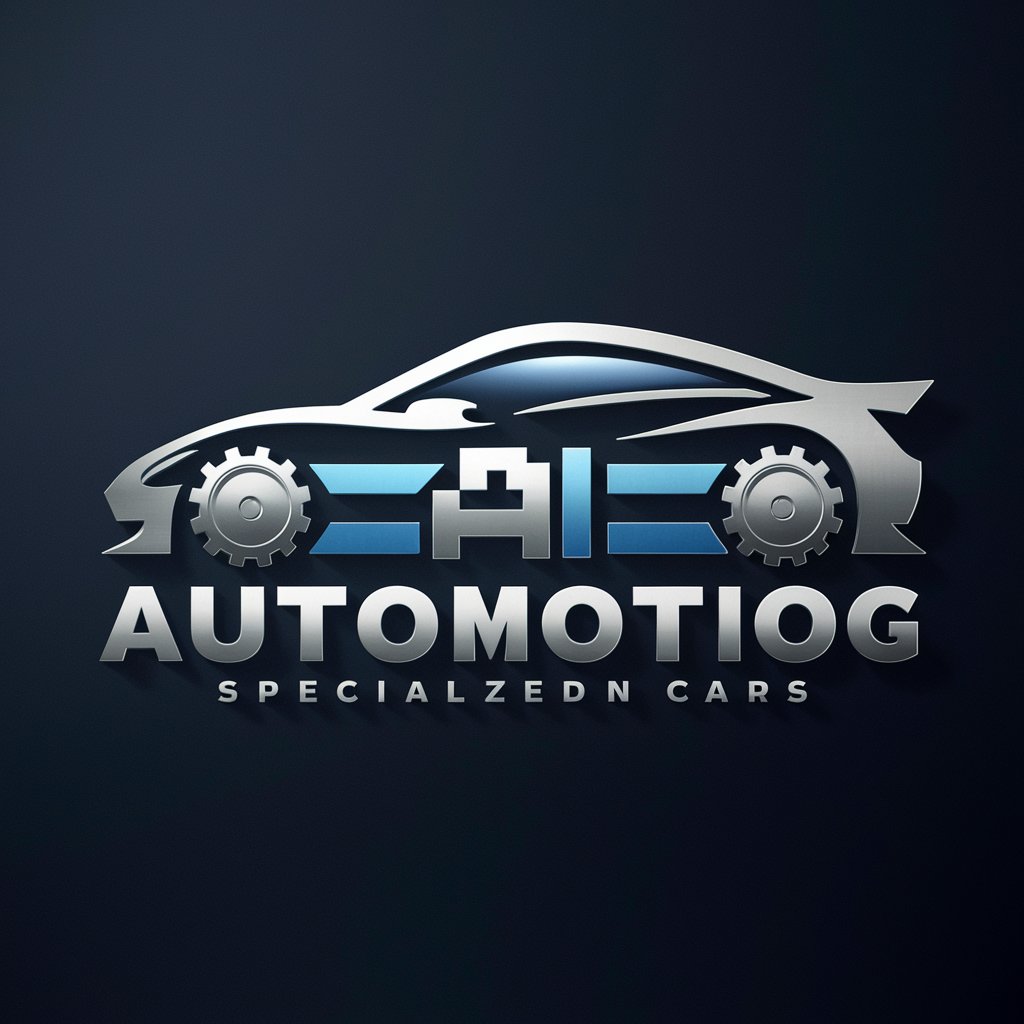Cars - Comprehensive Car Info & Visuals

Hello! Let's talk about cars.
Explore Car History & Technology with AI
Tell me about the history of the Ford Mustang.
How does an electric vehicle's powertrain work?
What are the key differences between turbocharged and naturally aspirated engines?
Can you explain the evolution of automotive safety features?
Get Embed Code
Understanding Cars: Functions and Design Purpose
Cars, at their core, are complex machines designed for the transportation of passengers and, in some cases, goods. They combine mechanical, electrical, and software components to create a system that can safely and efficiently navigate from one location to another. The design purpose of cars encompasses several objectives: safety, efficiency, comfort, and, increasingly, sustainability. For example, a family sedan is designed to maximize safety and comfort for all passengers, featuring advanced safety systems like airbags and stability control, along with creature comforts such as air conditioning and infotainment systems. On the other hand, a sports car focuses on performance and driving pleasure, with a design that includes a powerful engine, lightweight materials, and aerodynamic shapes to enhance speed and handling. Powered by ChatGPT-4o。

Primary Functions of Cars and Their Applications
Transportation
Example
Commuting to work, school, or for leisure activities.
Scenario
A person uses their compact city car to navigate through urban streets for daily commuting, taking advantage of the vehicle's small size for easier parking and maneuverability in tight spaces.
Cargo transportation
Example
Moving goods or personal belongings.
Scenario
A pickup truck or a van is used by a small business owner to transport goods to customers or to move equipment and supplies between work sites, leveraging the vehicle's spacious cargo area and robust design.
Emergency services
Example
Ambulances, fire trucks, and police cars.
Scenario
An ambulance is specially equipped with medical equipment and is designed for rapid transport of patients in need of urgent medical care, featuring sirens and emergency lighting to navigate through traffic more efficiently.
Recreational activities
Example
Off-roading, racing, or long-distance touring.
Scenario
An off-road enthusiast uses a four-wheel-drive vehicle equipped with special tires and suspension to explore rugged terrains and trails, enjoying the capability to traverse areas inaccessible to most vehicles.
Target User Groups for Cars
Commuters
Individuals who travel regularly between their home and workplace. They benefit from using cars due to the convenience, speed, and comfort cars offer compared to public transportation, especially in areas with limited or no public transit options.
Families
Families require vehicles that can safely and comfortably accommodate multiple passengers and their belongings. Cars designed for families often feature enhanced safety systems, ample storage space, and entertainment options to keep passengers engaged during trips.
Professionals
This includes individuals in professions that require the transportation of goods, tools, or equipment, such as contractors, sales representatives, and delivery drivers. They benefit from the cargo space and reliability that certain vehicles provide, facilitating their work tasks.
Automobile enthusiasts
Enthusiasts who appreciate the engineering, design, and performance of cars. They are interested in sports cars, classic cars, and the latest automotive technologies, seeking vehicles that provide unique driving experiences and advanced features.

How to Use Cars Information Tool
1
Start by accessing yeschat.ai to explore the Cars tool without the need for signing up or subscribing to ChatGPT Plus.
2
Identify your area of interest or specific query related to cars, such as design, history, or technology.
3
Input your question clearly and specifically to receive the most accurate and comprehensive information.
4
Utilize the generated visuals or request custom images to better understand complex topics or to visualize car designs and features.
5
For continuous learning or detailed exploration, repeat the process with varying queries to uncover a wide range of information about cars.
Try other advanced and practical GPTs
PósBiotecnologiaBR
Unlocking Biotech Research Insights with AI

GameScribe
Unlocking the world of games with AI.

rosary.network
Empowering Faith with AI-Powered Guidance

KonfidentHiringGPT
Streamline Your Hiring Journey with AI

Isomaptric
Visualize the World in 3D Detail

🏛️ History Herald lv2.9
Bringing history to life with AI

FlutterBuddy
Empowering Flutter Development with AI

LegalGPT
AI-Powered Legal Advisor at Your Service

GPTWrapped
Elevate Data Analysis with AI-Powered Precision and Wit

Arnold
Explore the world of movies, weapons, and gadgets with AI-powered Arnold.

InterviewGPT
Ace Interviews with AI-Powered Practice

PyCodeHelper
Empowering Python development with AI

Frequently Asked Questions about Cars Tool
What kind of car information can I find using this tool?
This tool provides comprehensive details on car designs, manufacturing processes, historical significance, technological advancements, and visual representations.
How can I visualize a specific car design using this tool?
Simply describe the car design you're interested in, and the tool can generate images or find relevant visuals to help you understand the design better.
Can this tool help me with academic research on cars?
Yes, it offers detailed information and historical data that can be invaluable for academic research, papers, or projects related to automotive technology and history.
Is it possible to get information on both classic and modern cars?
Absolutely. The tool covers a wide range of cars from classic models to the latest innovations in the automotive industry.
How can I ensure I'm using the tool effectively for my queries?
Be specific with your questions, use clear and detailed descriptions, and explore different aspects of your topic to get the most comprehensive answers.
